Have you ever opened the Uber app and noticed incredibly high prices? Even if you already know about standard Uber prices, you might notice higher charges due to surge pricing. This article aims to explain this model of dynamic pricing, showing you how it works and strategies to avoid it.
Key Information
Dynamic Rates
Prices increase during high demand to balance supply and customer needs.
Market Effects
Surge pricing can influence customer behavior and manage resource allocation.
Controversial Strategy
Viewed as both a necessity and a price-gouging tactic by critics.
Regulatory Scrutiny
Often under the microscope for potential consumer protection issues.
What Is Surge Pricing?
Surge pricing is a dynamic pricing strategy used by Uber that increases prices when rider demand exceeds driver supply. It’s designed to balance demand and supply by encouraging more drivers to enter high-demand areas, ensuring the reliability of the service.
How Does Surge Pricing Work?
Uber’s surge pricing kicks in when there are more people requesting rides than there are drivers available.
The app uses an algorithm to adjust ride prices in real time based on this demand. So, if you’re in an area with high demand, Uber multiplies the normal price by a certain amount — this could be 2 times, 3 times, or more, depending on how many people are looking for a ride versus how many drivers are around.
This higher price should attract more drivers to the area. As drivers respond and start picking up passengers, the number of available rides goes up, and then the prices come back down to normal levels.
How Do I Know if Surge Pricing is Active?
Though surge prices are always charged upfront, Uber no longer displays the exact surge multipliers you’ll be charged. However, by simply opening the app and looking at the prices, surge pricing becomes fairly obvious.
How Riders Can Tell if Surge is Active
Passengers can immediately tell that surge pricing is active, as they’ll see prices jump higher than they’re used to paying.
- Open the Uber app.
- Tap the “Where to?” bar to enter your pick-up and drop-off locations.
- Tap on your desired ride type.
- Before you confirm your request, tap the info icon next to the service description to see your pricing breakdown.
If your base cost is higher than they would be under standard rates, you’ll know a surge multiplier has been activated.
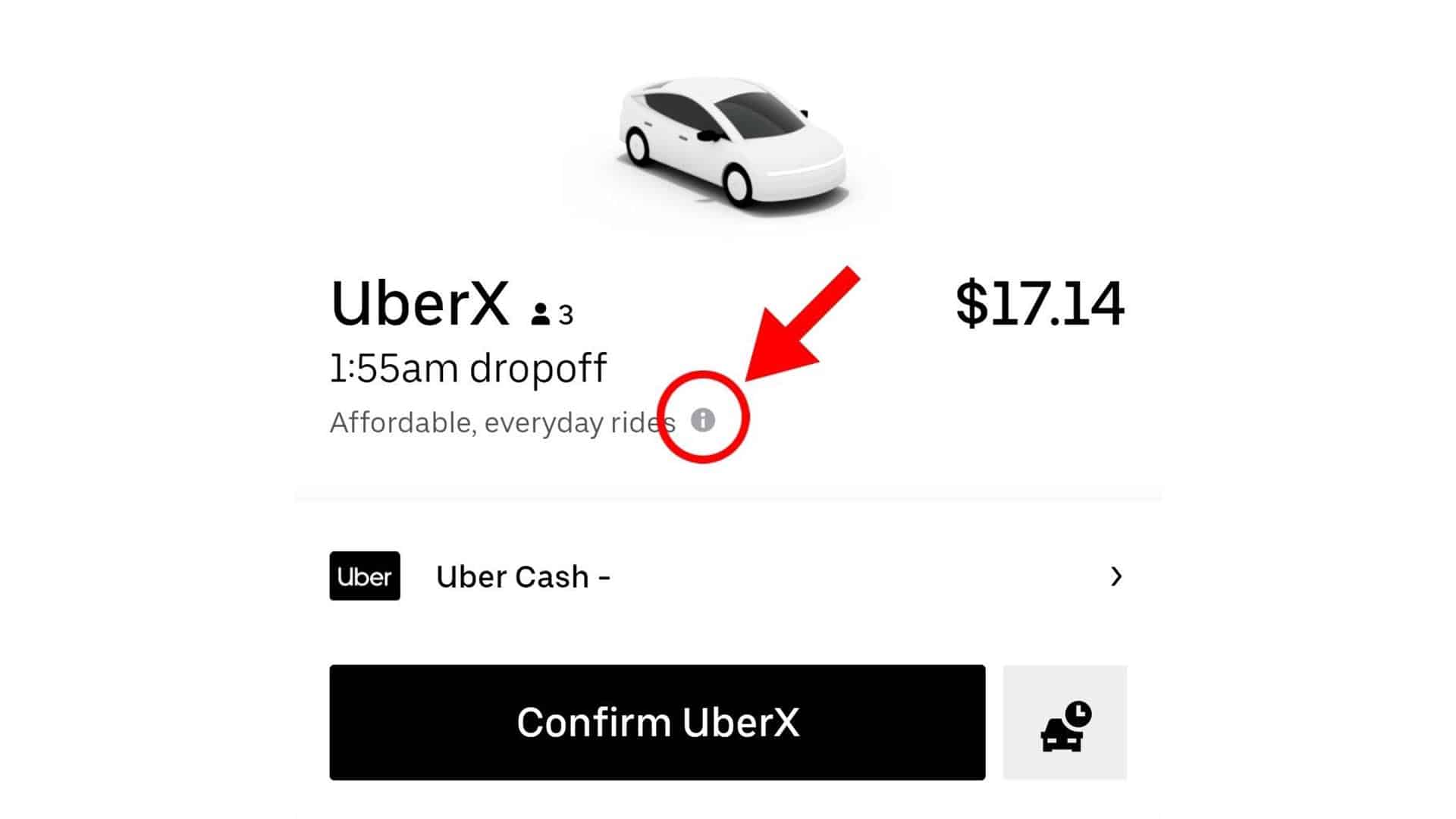
How Drivers Can Tell if Surge is Active
Drivers know about surge pricing because of the red areas on the map. If you’re a driver, then you’ll see the color along with Uber surge multipliers. For example, you might see 2X, 3X, or 4X accompanying the red surge price zones.
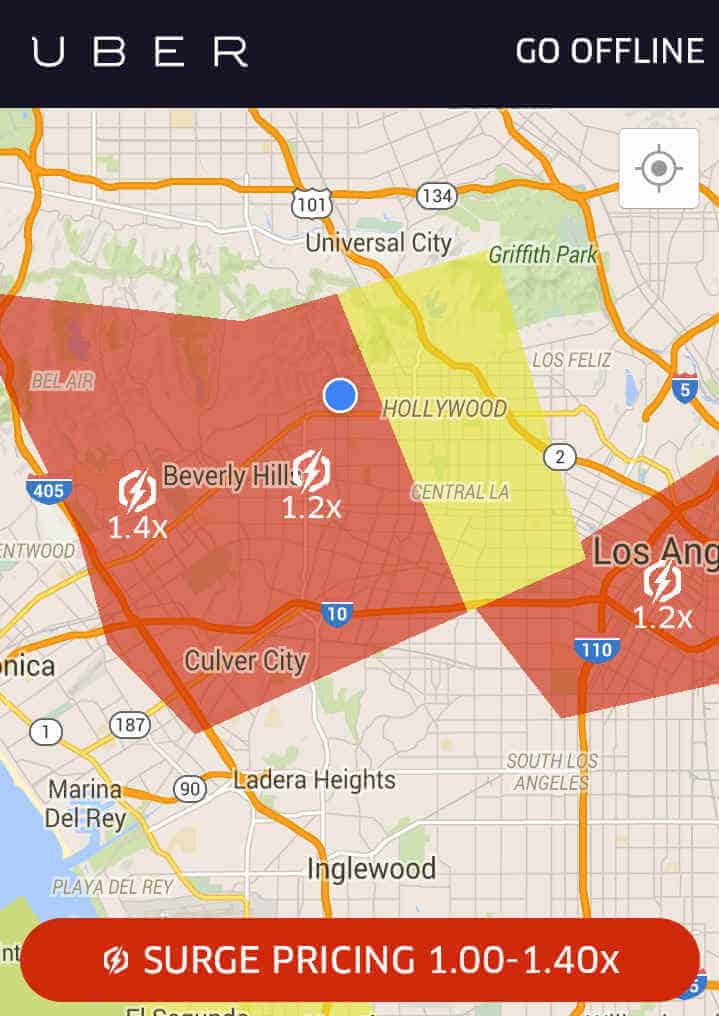
How Long Does Surge Pricing Last?
Surge pricing remains in effect until the high demand for rides is matched by an adequate number of drivers. This duration can vary: it could be a short surge for a few minutes or extend over half an hour or more.
It often ends quicker if there are many drivers nearby who move into the high-demand area to take advantage of the higher rates. Once enough drivers arrive to meet the demand, the surge pricing dissipates.
Surge Pricing: A Driver’s Perspective
While surge pricing often catches riders off guard with higher costs, it serves as a financial incentive for drivers.
During times of high demand, drivers have the potential to significantly increase their earnings.
For example, when surge multipliers are in effect, a driver could earn double or even triple the usual rate for the same distance. This not only motivates more drivers to become available but also helps to quickly meet rider demand.
Understanding this aspect of surge pricing can help riders see the broader economic purpose behind it, beyond just the impact on their own.
An Example of Surge Pricing for Riders
Let’s say you go to a concert and you used Uber to get there. Unfortunately, one of your friends took too long to get ready and so you got to the concert late.
Since you arrived after the big rush of everyone else getting to the arena, you most likely paid a relatively low rate to call a driver. Maybe you paid $25 to get there.
Once the event ends and everyone in the arena wants to leave at the same time, then surge pricing will likely hit the area. Too many people need a ride compared to the number of available drivers, causing surge to activate.
If the surge pricing multiplier creates a 2x surge, then it’s likely that you’ll need to pay closer to $50 to get home. You might pay closer to $100 for the same trip if the surge goes beyond 3x or 4x.
For people unfamiliar with surge pricing, you can imagine how surprised they become during these situations.
Real-World Example From Yours Truly
It’s well-known among Uber users that New Year’s Eve is one of the busiest nights for Uber out of the entire year. Regardless, the group of friends I went out with last year decided to take an Uber to be safe.
Around bar closing time, we went to call a ride home. Uber was surging at the some of the highest rates I have ever seen it – 5X – meaning the $50 ride we took across town to get there was now $250 home.
I didn’t want to pay the price so I checked Lyft. Similar prices. So I opted for another option – calling a cab. While there are huge differences between a cab and an Uber, the cab got me home and it only cost me $50, saving me $200 with one call.
A Brief History of Surge Pricing
Uber’s surge pricing emerged in 2014, tackling the issue of ride scarcity during peak demand by incentivizing drivers with higher earnings.
This system replaced the frustrating “no cars available” status with a model that adapts to real-time demand, similar to variable airline ticket pricing.
Although initially controversial among users unaccustomed to fluctuating ride costs, surge pricing has now become a standard mechanism across the rideshare industry, including for competitors like Lyft, ensuring riders have access to transportation when they need it most.
You’ll know that you might earn two, three, or four times your normal cost if you get pinged for pickups inside these zones.
Does Surge Pricing Actually Help Balance Supply and Demand?
Yes, surge pricing balances out the supply and demand balance. Using the example from the previous section, drivers rush to surge areas. This action balances out the fact that too few drivers were present in a busy area only a few minutes earlier.
Is Surge Pricing a Bad Thing for Riders?
You could say that surge pricing is a bad thing for riders. But the process of meeting rider demand with more supply as quickly as possible benefits passengers in the long run.
It would probably take longer to find a ride if Uber didn’t provide a financial incentive for drivers to work in areas with high demand.
One strategy you might try is waiting to order your ride while other riders go ahead and take rides that cost them more than normal.
Depending on the situation, the surge time might end quickly and then you can select a ride at a price that makes you more comfortable.
How to Avoid Surge Pricing
Though surge pricing is inevitable, there are some strategies you can use to avoid it. We’ll discuss a few of these tactics below:
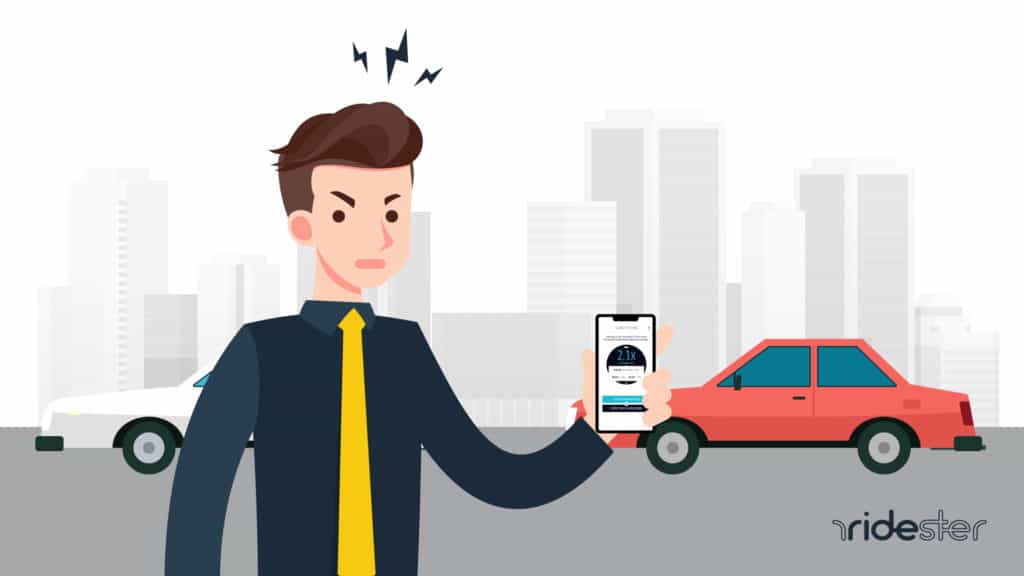
1. Avoid Busy Times and Areas
One of the most obvious and easy wasy to avoid surge pricing is to steer clear of peak times and crowded areas.
Typically, weekdays see surges during the morning (7-9 a.m.) and evening (4-6 p.m.) rush hours. Big local events can also cause spikes, with surges likely just before and after a concert or game.
Holidays, like New Year’s Eve or Valentine’s Day, often bring unexpected surge times, especially in nightlife hotspots. Downtown zones and major tourist spots are usual suspects for high surges.
If you’re near a busy venue, walking a bit further away may lead to lower prices. For drivers, the Uber app provides a heat map to track surge areas.
As a rider, picking less crowded areas for pick-up can help you avoid the surge.
2. Schedule a Ride
Planning ahead can save you from surge pricing. If you can schedule your trip in advance, do so—Uber allows you to book a ride from an hour up to 30 days ahead of time. By locking in your ride early, you’re quoted a price that won’t change, even if demand spikes at the last minute.
This option is available for most ride types, such as UberX, UberXL, Select, Black, and Black SUV, ensuring that you have a variety of choices for your pre-planned journey.
Keep in mind, though, this feature isn’t offered for UberPool, where prices are typically lower but can vary due to shared ride dynamics.
3. Get an Uber Monthly Pass
Consider getting a membership to Uber One if you often use UberX or UberPool. For a monthly fee—around $24.99, though it can vary by location—you can shield yourself from surge pricing on many routes.
This pass usually includes discounts on rides, so you can save money even on trips not covered by price protection, reducing the overall effect of surge pricing on your travel expenses.
Frequently Asked Questions
Some of the most common questions about surge pricing are answered below.
Is Congestion Pricing Different Than Surge Pricing?
Congestion pricing is distinct from Uber’s surge pricing; it’s a tax imposed by cities to reduce traffic in busy areas at peak times, unlike Uber’s demand-based increases. Cities implement it to manage congestion, not to balance ride supply and demand.
Can You Dispute an Uber Surge Pricing Charge?
Yes, you can dispute an Uber surge charge if you believe it was unjustifiably high. Instances of excessively high surge multipliers, such as those that might occur on New Year’s Eve, can be contested by contacting Uber customer support through the app. Each case is evaluated individually, and you may be eligible for a refund or adjustment if the charge is deemed excessive.
What Happens If You Chargeback to Uber?
If you issue a chargeback on a ride, your account will show a negative balance, blocking service access until it’s cleared.
Uber discourages system abuse through chargebacks. Instead, they recommend contacting support to dispute charges for a possible resolution.
Unfortunately, Uber will make your account reflect a negative balance if you chargeback on a ride charge.
Wrapping Up
Understanding surge pricing gives you a perspective on Uber’s policy, which often elicits mixed feelings. The principle of supply and demand justifies higher costs during peak times, which can be beneficial for drivers looking to increase their earnings.
However, as a passenger, the frustration of paying more is undeniable. With surge pricing entrenched in the rideshare model and the potential addition of congestion pricing fees, the cost of travel may rise further in the future.


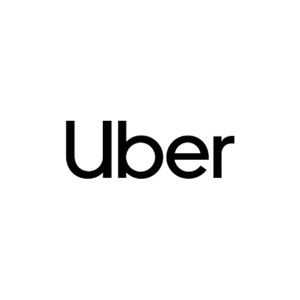


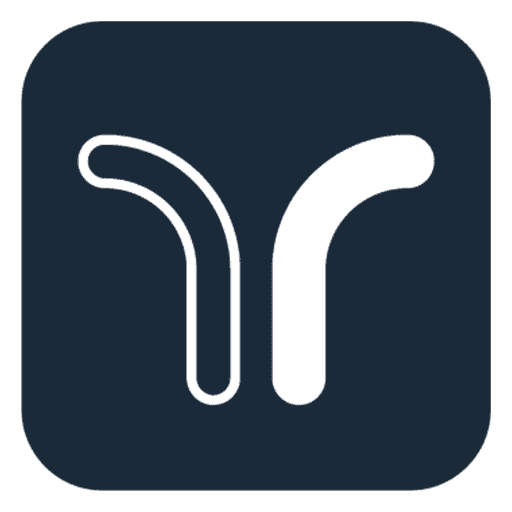
Surge equals service charge at the end of the ride.
UBER woildnt need to give drivers extra incentive if they just paid us for the miles driven on a ride request. Its not that complicated. Instead Uber wants the driver to drive across town for free and then wait for 9 cents per minute. Making the first 15 minutes of a fare 30 cents. For a ride that pays less than 4 dollars. If they really want the drivers to have motivation, pay us for our expenses. No more “cherry picking” as Uber calls it, and it is just easier for the pasenger to understand. The random fees are borderline imbezzlement, and definately price gouging.
Lyft keeps the entire surge. I have documentation as a driver and a passenger as recently as yesterday 05/17/2022. I was changed 91.00$ for a ride from Lax to Huntington Beach, CA.
I asked to see the drivers phone after the ride because he was new. 32.00$ Lyft is corrupt. I contacted Lyft regarding this and there response was driver’s earn time and mileage that was it.
I understand supply and demand but raising almost 4X the cost in a small town market? I booked a ride at $27, the driver said he was ok waiting for me while I was still deplaning from the aircraft and may be awhile. I was 3 minutes from the gate to the ride. The driver cancelled me and the rate was over $100 until everyone left the rate was back down to $27. By that time a family member I called arrived and picked me up and the several Uber vehicles shown in the area ended up with nothing at all.